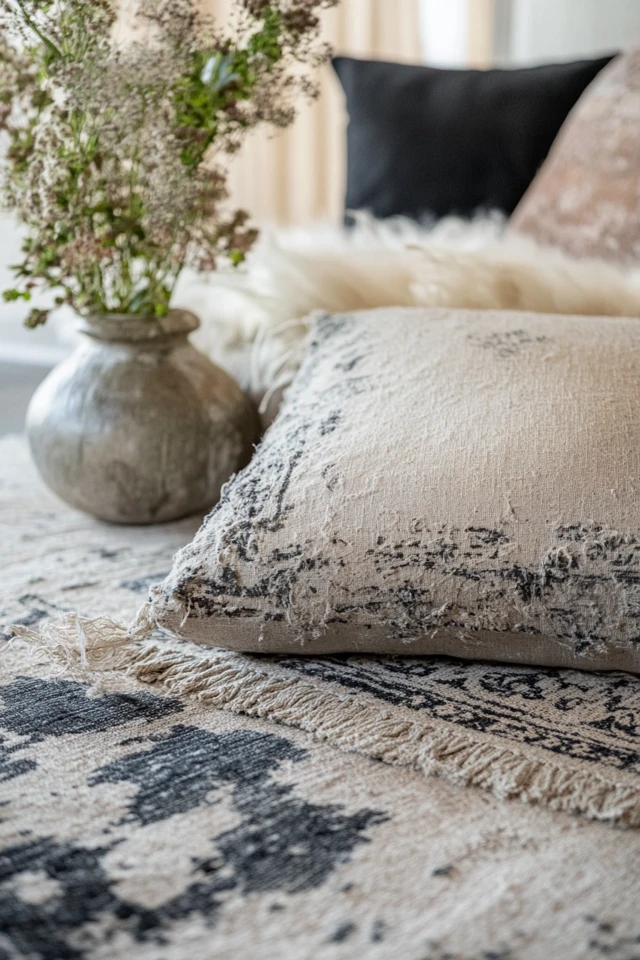Introduction
A bohemian interior design thrives on its eclectic mix of textures, patterns, and colors. While bold hues and dramatic contrasts are often associated with the style, a soft and inviting boho palette can transform your space into a serene, cozy retreat. Imagine a room adorned with muted terracottas, gentle blush tones, earthy greens, and creamy whites, all blending seamlessly to create an atmosphere of warmth and tranquility. A soft boho palette offers a perfect balance between the lively spirit of bohemian decor and the calming energy of neutral tones.
I vividly recall redesigning a friend’s studio apartment with a soft boho palette. The room was small and felt cluttered, but by introducing soft pastel tones, earthy neutrals, and a few pops of muted mustard and sage green, the space became an inviting sanctuary. The lighter color palette brought a sense of openness, while textured textiles and boho decor maintained the style’s free-spirited essence. It was a reminder of how transformative the right palette can be—not just for a room’s aesthetics, but for its energy and functionality.
This guide will walk you through creating a soft and inviting boho palette, helping you achieve a harmonious design that is as relaxing as it is stylish.
The Perfect Design for You
A soft boho palette is ideal for those who want the charm and artistry of bohemian design but prefer a more understated and tranquil approach. It’s perfect for bedrooms, living rooms, or even small spaces where bright, saturated colors might feel overwhelming. This palette allows you to embrace the boho aesthetic in a way that feels grounded and soothing, making it perfect for creating spaces that promote relaxation and mindfulness.
Picture a living room with a soft blush sofa, a woven jute rug, and creamy macramé wall hangings, accented with sage green pillows and warm wooden furniture. This palette is versatile and timeless, appealing to anyone who loves the layered, textured look of boho decor but wants it to feel light and airy.
Picture Gallery
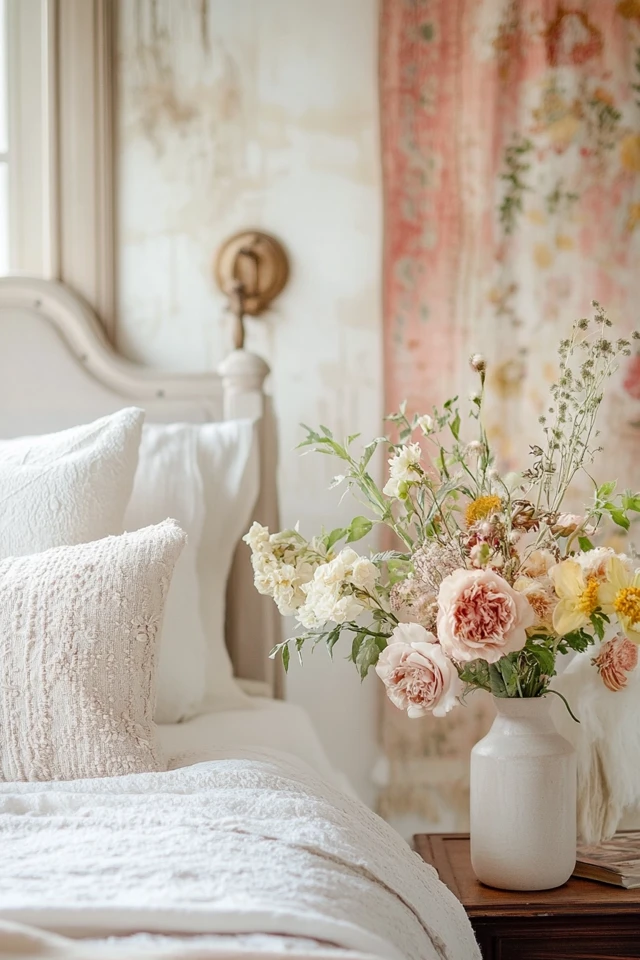
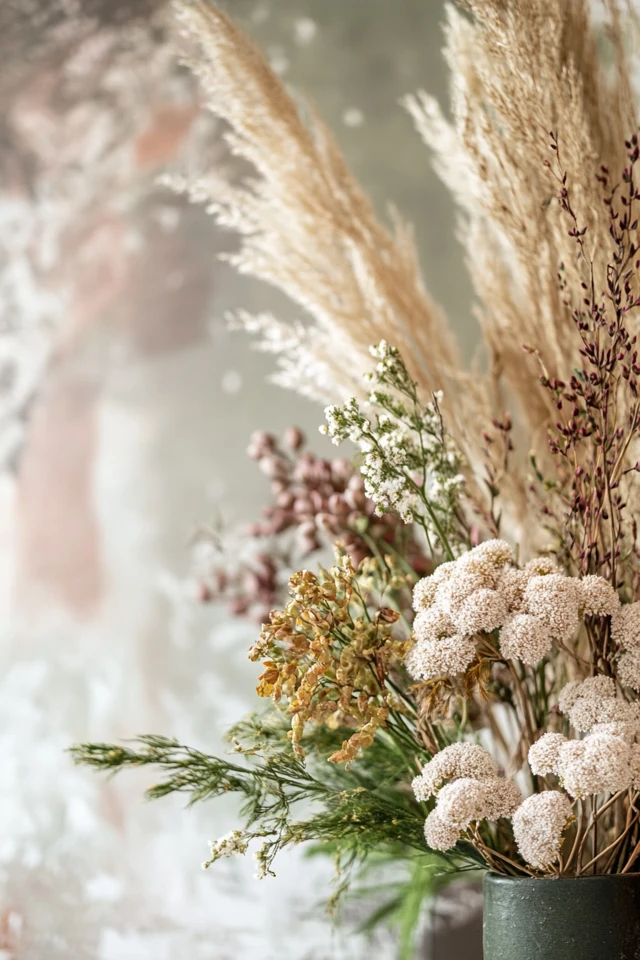
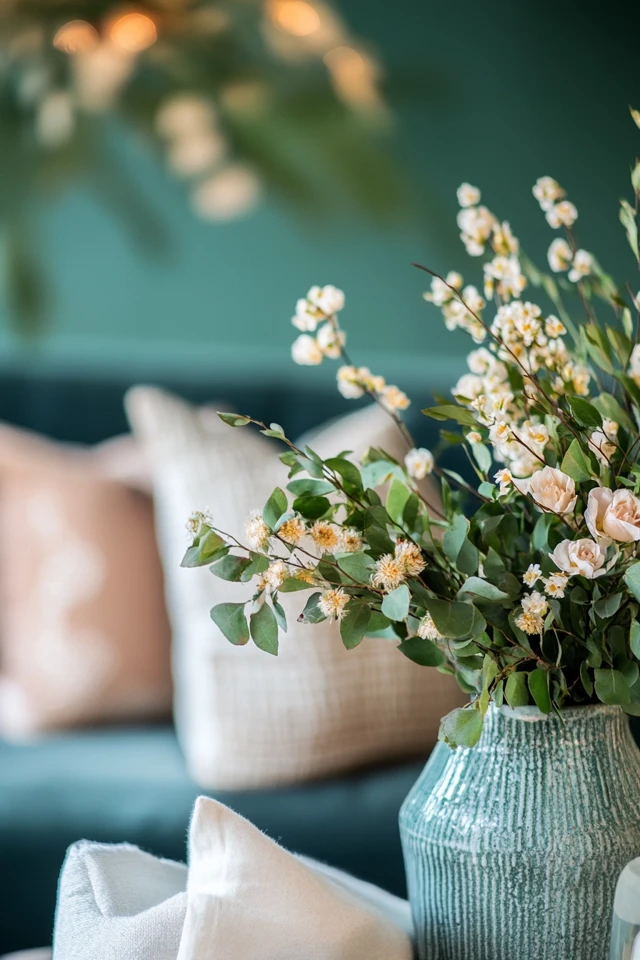
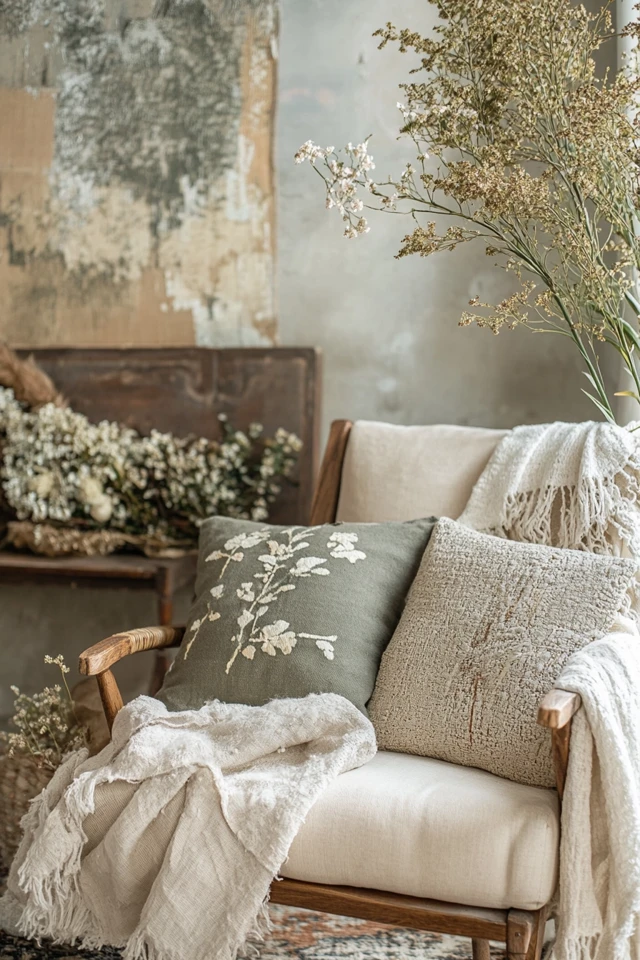
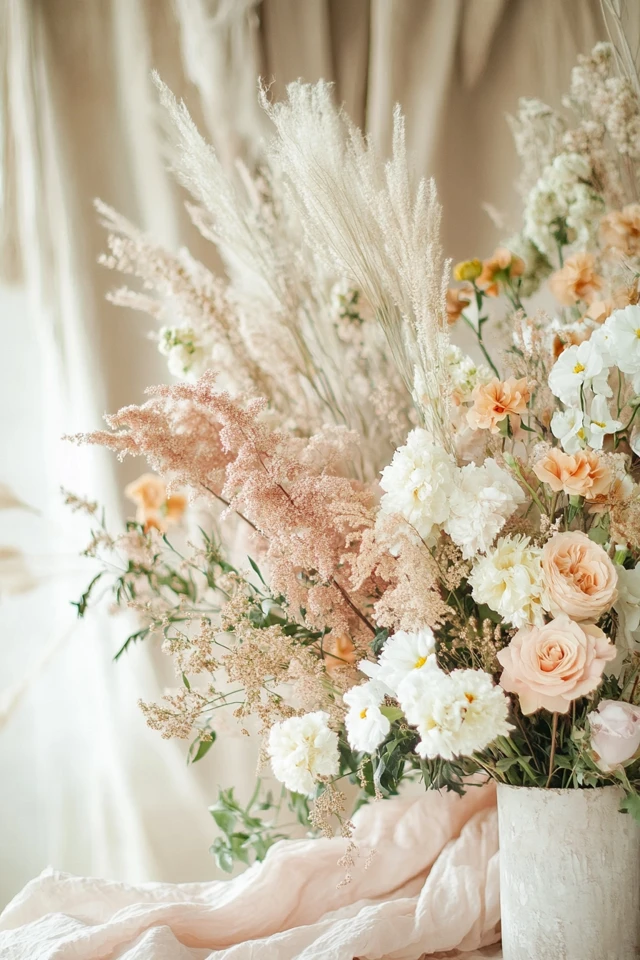
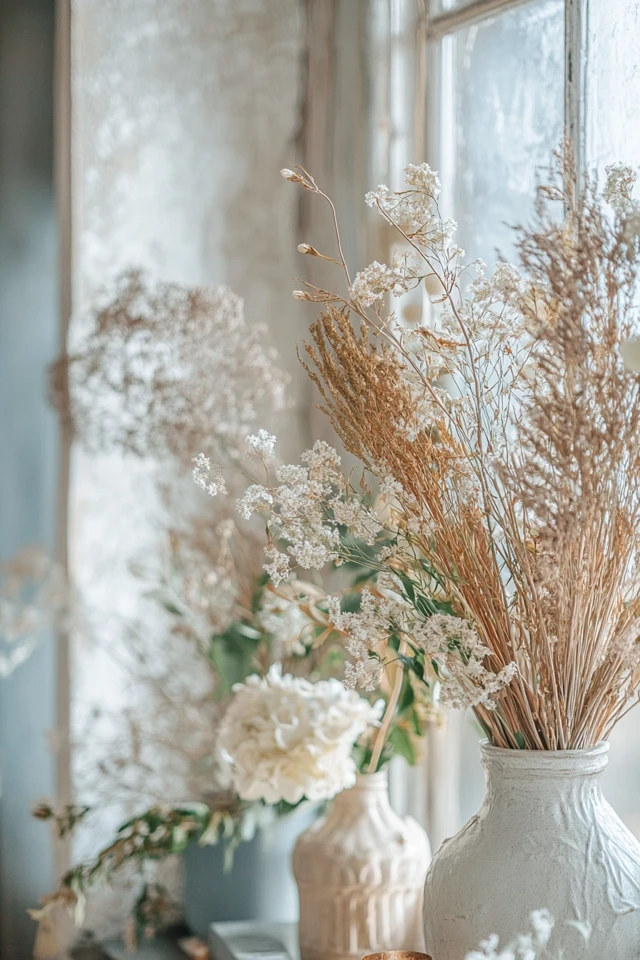
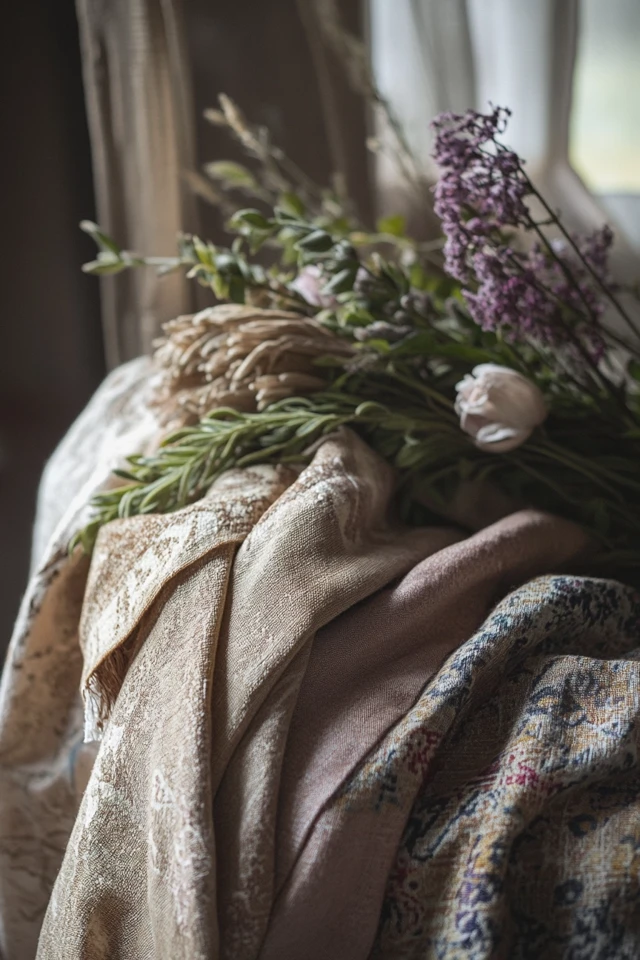
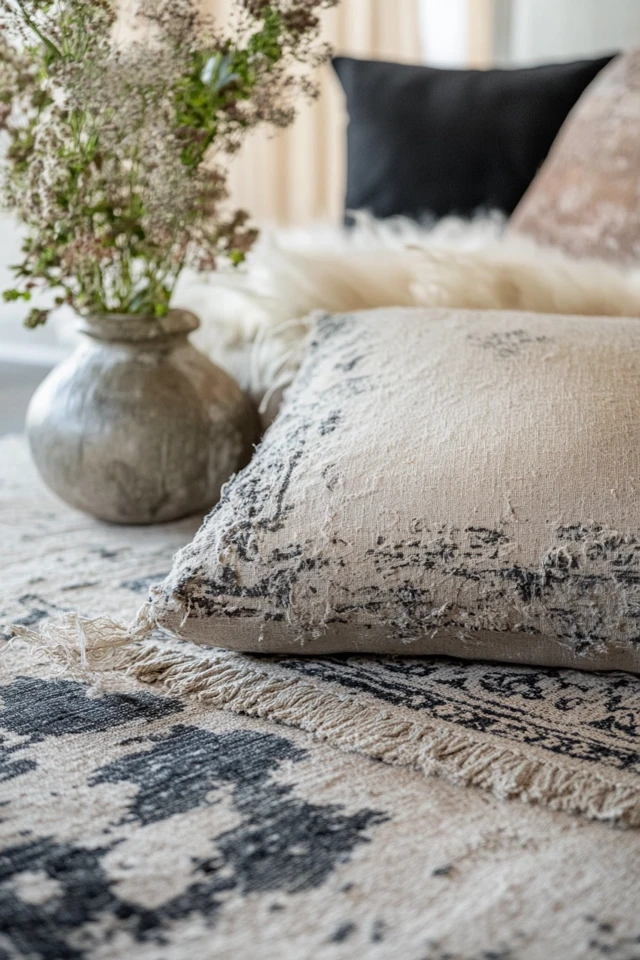
Why These Key Elements Work So Well Together
A soft boho palette works beautifully because it balances the bohemian style’s eclectic energy with a calming, cohesive color scheme. Here’s why these elements harmonize so well:
1. Earthy Neutral Base:
A foundation of soft neutrals like beige, ivory, and sand creates a grounding backdrop that allows other elements to shine.
2. Muted Accent Colors:
Gentle tones like sage green, blush pink, and dusty blue add personality without overpowering the space.
3. Textured Layers:
A variety of textures, such as woven fabrics, macramé, and natural materials, enhance the visual depth of the soft palette.
4. Warm Undertones:
Warm hues like terracotta and mustard provide contrast and bring a cozy, inviting feel to the design.
5. Harmonious Contrast:
The soft palette creates a cohesive look that balances light and dark tones for visual interest without harshness.
Creating a Boho Palette That’s Soft and Inviting
1. Start With a Neutral Foundation
- What to Include: Use creamy whites, soft beiges, and light taupes for walls, larger furniture pieces, and base textiles.
- Why It Works: A neutral base creates a calming backdrop that allows the layered boho elements to stand out.
- How to Style It: Pair white or beige walls with a jute rug and light wood furniture to establish a soft, earthy foundation.
2. Incorporate Muted Pastel Tones
- What to Include: Add shades like blush pink, sage green, dusty lavender, or muted terracotta for a touch of color.
- Why It Works: These gentle hues enhance the boho aesthetic without feeling overwhelming, maintaining a serene atmosphere.
- How to Style It: Use pastel throw pillows, patterned curtains, or wall art to introduce color in a subtle way.
3. Add Warm Earth Tones for Depth
- What to Include: Include accents like terracotta, mustard, or ochre to bring warmth and contrast to the soft palette.
- Why It Works: Earth tones provide a sense of coziness and complement the natural materials commonly found in boho interiors.
- How to Style It: Place terracotta planters on shelves or use a mustard-colored throw blanket to add pops of warmth.
4. Layer Textures and Patterns
- What to Include: Mix woven fabrics, macramé, fringe, and natural fibers like rattan, jute, and linen.
- Why It Works: Texture adds visual interest and dimension, preventing the soft palette from feeling flat or sterile.
- How to Style It: Layer a textured throw over a linen sofa, and pair it with a patterned rug and woven baskets for a cohesive look.
5. Introduce Wooden Accents for Warmth
- What to Include: Use light or medium-toned wood furniture, such as coffee tables, shelving, or headboards.
- Why It Works: Wooden elements add a natural, organic feel that complements the earthy tones in the palette.
- How to Style It: Choose furniture with clean lines and natural finishes to keep the look understated yet stylish.
6. Highlight With Metallic Accents
- What to Include: Use soft gold, brushed brass, or copper decor items like mirrors, vases, or lighting fixtures.
- Why It Works: Metallic touches bring a hint of glamour and reflect light, enhancing the airy feel of the space.
- How to Style It: Place a gold-framed mirror above a console table or use a brass floor lamp to add subtle elegance.
7. Incorporate Lush Greenery
- What to Include: Add plants like fiddle leaf figs, pothos, or succulents to bring life and color into the room.
- Why It Works: Greenery complements the soft tones of the palette and introduces a fresh, natural element.
- How to Style It: Use woven planters or ceramic pots in muted colors to tie the greenery into the boho aesthetic.
8. Use Soft Lighting to Enhance the Palette
- What to Include: Opt for warm-toned lighting, like string lights, table lamps with fabric shades, or pendant lights with natural materials.
- Why It Works: Warm lighting enhances the softness of the palette and creates a cozy, inviting ambiance.
- How to Style It: Hang string lights along a gallery wall or use a rattan pendant lamp in the center of the room.
9. Incorporate Subtle Patterns
- What to Include: Use patterns with delicate designs, like tribal prints, floral motifs, or geometric shapes in soft tones.
- Why It Works: Subtle patterns add personality to the space without clashing with the muted palette.
- How to Style It: Choose a patterned area rug or decorative cushions with boho-inspired prints in complementary colors.
10. Tie It Together With Statement Decor
- What to Include: Use bold yet soft decor pieces, like a large macramé wall hanging, a gallery of neutral-toned art, or an oversized woven basket.
- Why It Works: Statement pieces draw the eye and anchor the design while maintaining the softness of the overall palette.
- How to Style It: Hang a macramé piece above the bed or place a large woven basket in a corner for storage and style.
FAQ Section
Q1: How do I avoid a soft boho palette from looking too plain?
A1: Add depth by layering textures, incorporating subtle patterns, and introducing a few darker or richer tones for contrast.
Q2: What colors pair best with a soft boho palette?
A2: Stick to earthy tones like muted greens, blush pinks, and terracottas, complemented by neutrals like ivory, beige, and light gray.
Q3: Can I use a soft boho palette in a small space?
A3: Absolutely! The light and airy tones make small spaces feel larger and more open while still adding warmth and personality.
Q4: How can I incorporate bold patterns into a soft palette?
A4: Choose patterns in muted or pastel colors to keep them harmonious with the soft palette while still adding visual interest.
Q5: What types of plants work best in a soft boho space?
A5: Plants like ferns, pothos, and fiddle leaf figs are ideal, as their lush green tones complement the muted, natural color scheme.
Variations
- Minimalist Soft Boho: Stick to a neutral base with minimal patterns and textures for a clean, understated look.
- Maximalist Soft Boho: Layer multiple muted patterns and colors, adding bold statement pieces for a dynamic design.
- Rustic Soft Boho: Incorporate distressed wood, raw linens, and earthy tones for a grounded, natural aesthetic.
- Modern Soft Boho: Blend sleek furniture with soft boho tones and metallic accents for a contemporary yet cozy vibe.
How to Showcase It
- Living Room: Use a light beige sofa, pastel throw pillows, and a patterned rug to create a soft, inviting seating area.
- Bedroom: Layer a muted blush duvet with textured pillows and a macramé wall hanging for a serene retreat.
- Dining Area: Combine wooden furniture with soft lighting and earthy decor for a warm, welcoming space.
- Outdoor Spaces: Use light-colored cushions, woven rugs, and soft lighting to bring the palette to patios or balconies.
Occasions to Feature It
- Everyday Living: Enjoy the calming, inviting atmosphere of your soft boho palette daily.
- Seasonal Updates: Swap accents seasonally, such as introducing cooler tones in summer or warmer tones in winter.
- Hosting Guests: Impress visitors with a serene, beautifully styled space that feels both cozy and chic.
- Creative Projects: Use the palette as inspiration for photography, painting, or styling social media content.
Conclusion
A soft and inviting boho palette is the perfect way to bring warmth, serenity, and style into your home. By combining muted tones, earthy textures, and layered patterns, you can create a space that feels both tranquil and visually captivating.
Whether you’re redesigning an entire room or adding subtle boho touches to your decor, this palette offers endless opportunities for personalization and creativity. Embrace the beauty of a soft boho palette and watch your space transform into a haven of comfort and charm.

